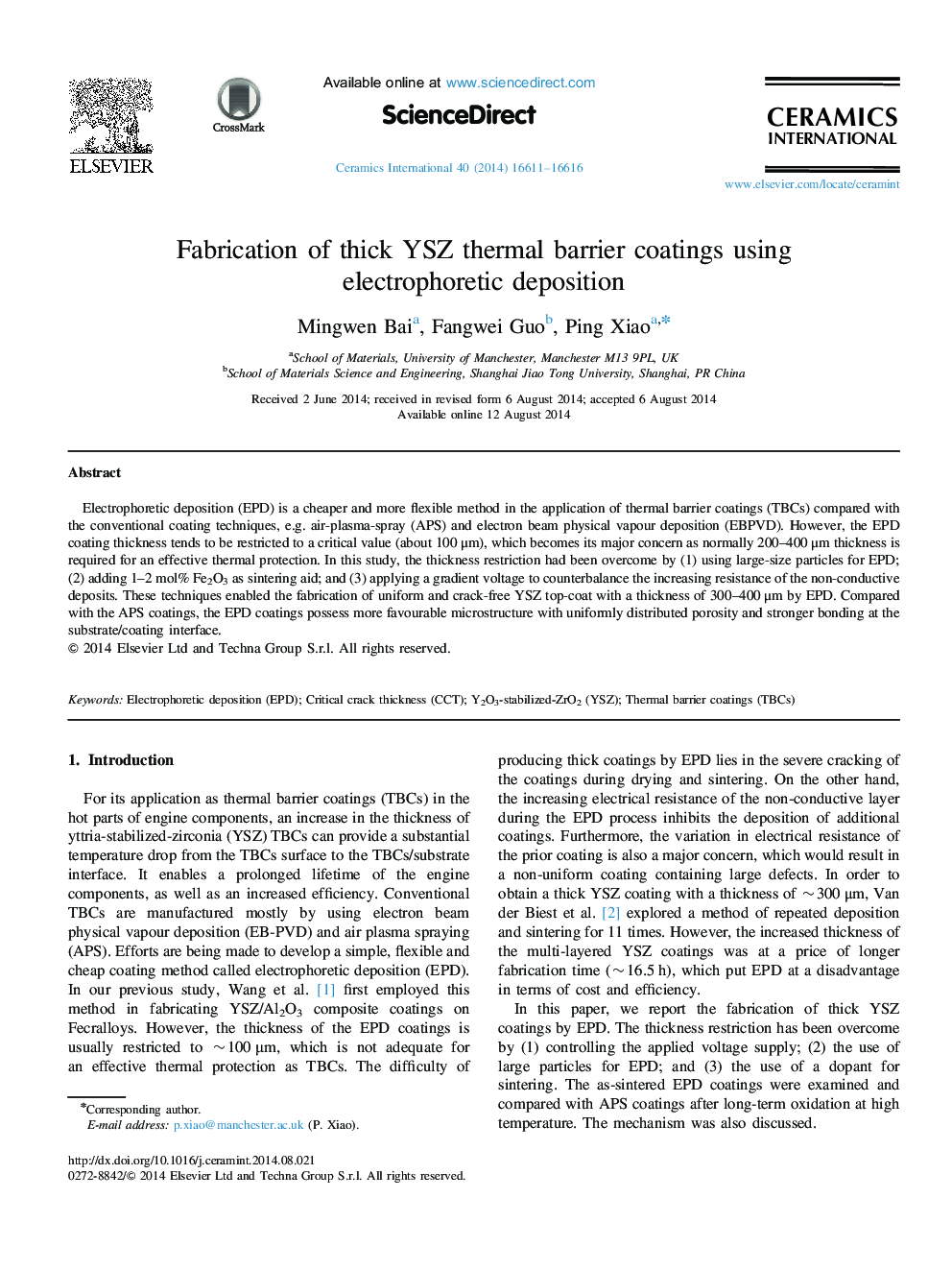| Article ID | Journal | Published Year | Pages | File Type |
|---|---|---|---|---|
| 1460544 | Ceramics International | 2014 | 6 Pages |
Electrophoretic deposition (EPD) is a cheaper and more flexible method in the application of thermal barrier coatings (TBCs) compared with the conventional coating techniques, e.g. air-plasma-spray (APS) and electron beam physical vapour deposition (EBPVD). However, the EPD coating thickness tends to be restricted to a critical value (about 100 μm), which becomes its major concern as normally 200–400 μm thickness is required for an effective thermal protection. In this study, the thickness restriction had been overcome by (1) using large-size particles for EPD; (2) adding 1–2 mol% Fe2O3 as sintering aid; and (3) applying a gradient voltage to counterbalance the increasing resistance of the non-conductive deposits. These techniques enabled the fabrication of uniform and crack-free YSZ top-coat with a thickness of 300–400 μm by EPD. Compared with the APS coatings, the EPD coatings possess more favourable microstructure with uniformly distributed porosity and stronger bonding at the substrate/coating interface.
